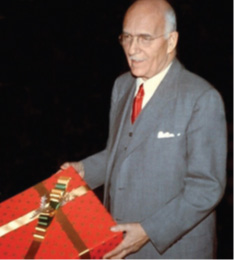
A hastily-called national conference for nonprofit organizations on gift annuities was held in Manhattan on April 29, 1927. An actuary named George Augustus Huggins introduced best practices that have become fundamental in charitable gift planning: statistical measurement of average beneficiary longevity; calculating payment rates by targeting a charitable residuum; and valuing charitable and beneficiary interests using financial projections grounded in investment experience.
Negotiating with donors over open-ended annuity payment rates, and wishful thinking about financial consequences, was replaced by a national consensus over actuarially-determined, responsible payment schedules.
This actuarial revolution in gift planning requires nonprofits to hire and train specialists to explain, promote, and manage complex programs. There is a strong argument that the profession of charitable gift planning began at the 1927 conference, when the Committee on Gift Annuities (now known as the American Council on Gift Annuities, ACGA) was founded to provide a voluntary national process to analyze economic and demographic experience, calculate responsible annuity rates, develop and promote best practices, train nonprofit gift-planning professionals, track federal and state legislation, and conduct research.
Creating suggested maximum payment rate tables for gift annuities is not a one-time event. ACGA has a process of continuous monitoring and feedback from its members. It tracks mortality experience and trends in the charitable residuum. It tracks the volume and characteristics of gifts that are being made. It gathers investment data, and makes informed judgments about future interest rates and stock values. It makes a judgment to impose a rate cap for older gift annuitants, and adjusts rates downward from the cap for 80 to 90-year-old annuitants. It considers the timing of rate changes in light of the practical effects on marketing materials and donor disclosures.
Gift annuities are gifts, not investments. Perhaps ACGA’s most important role is that since 1927 it has maintained a balance between the self-interest of annuitants and the philanthropic motivations of donors in order to ensure that people continue to make gifts for purposes close to their hearts.
 About 1,800 gift planners participated in 13 national conferences held by the Committee on Gift Annuities (ACGA) before the Tax Reform Act of 1969. Its 34th conference will be held in April 2020.
About 1,800 gift planners participated in 13 national conferences held by the Committee on Gift Annuities (ACGA) before the Tax Reform Act of 1969. Its 34th conference will be held in April 2020.
This is the oldest continuing series of training events for the staff of American nonprofit organizations. Pioneering leaders of gift planning with ACGA included Huggins, Charles Baas, Gilbert Darlington, Roland Matthies, Charles Burrall, and Michael Mudry. Conrad Teitell (pictured) presented at every ACGA conference between 1968 and 2016.